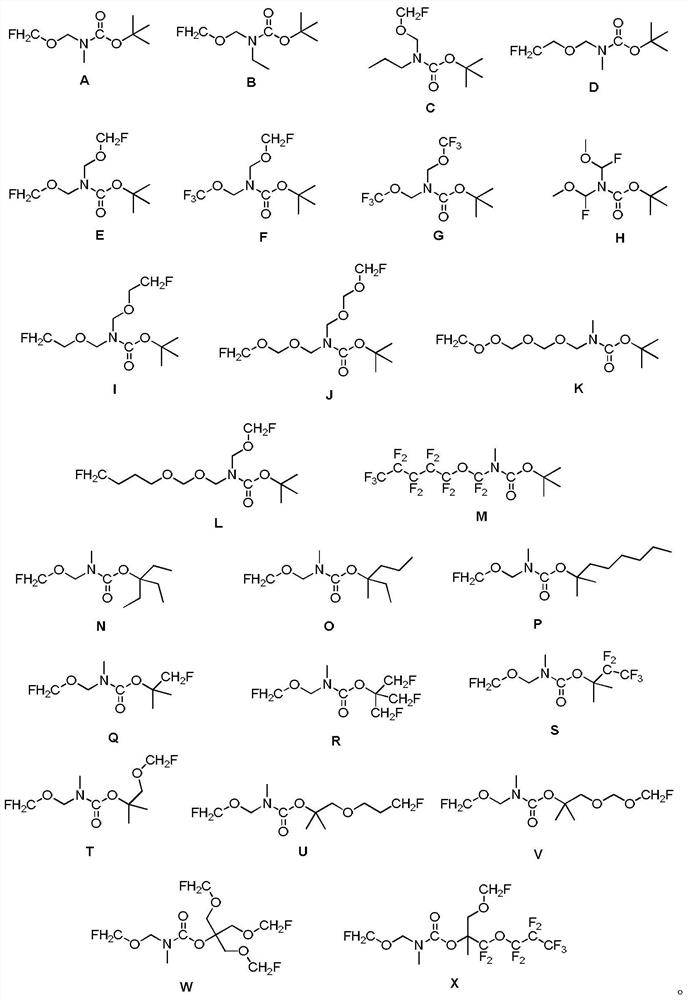Carbamate compound for non-aqueous electrolyte and application thereof
A non-aqueous electrolyte, urethane technology, applied in electrochemical generators, circuits, organic chemistry, etc., to achieve strong metal coordination ability, improve oxidation resistance, enhance the effect of dissociation ability
- Summary
- Abstract
- Description
- Claims
- Application Information
AI Technical Summary
Problems solved by technology
Method used
Image
Examples
specific Embodiment
[0041] 2C (or 3C) discharge capacity ratio (%) = 2C (or 3C) discharge capacity / 0.5C discharge capacity of the same battery × 100% (2) Battery cycle performance test at room temperature (1A) Constant current-constant voltage charge to 4.5V, put it on hold for 10min, discharge at a constant current of 0.5C (1A) to a cut-off voltage of 3.0V, cycle 200 times, and record the discharge capacity each time.
[0042] Capacity retention after 200 cycles (%) = 200th discharge capacity / 2nd discharge capacity × 100%
[0043] The detailed battery performance of the battery is shown in Table 4 below.
[0044] Table 4: Different electrolytes and corresponding battery performance
[0045] By comparing Example 2 and Comparative Examples 3 and 4, it can be found that the introduction of amino groups into the structure of carbamate can indeed increase the stability of molecules during high-voltage cycling by expanding conjugation and avoiding α-H and other theories. , thereby improving the ...
PUM
| Property | Measurement | Unit |
|---|---|---|
| density | aaaaa | aaaaa |
| density | aaaaa | aaaaa |
Abstract
Description
Claims
Application Information
 Login to View More
Login to View More - R&D
- Intellectual Property
- Life Sciences
- Materials
- Tech Scout
- Unparalleled Data Quality
- Higher Quality Content
- 60% Fewer Hallucinations
Browse by: Latest US Patents, China's latest patents, Technical Efficacy Thesaurus, Application Domain, Technology Topic, Popular Technical Reports.
© 2025 PatSnap. All rights reserved.Legal|Privacy policy|Modern Slavery Act Transparency Statement|Sitemap|About US| Contact US: help@patsnap.com



